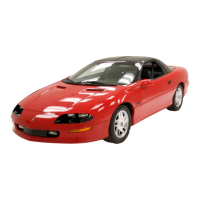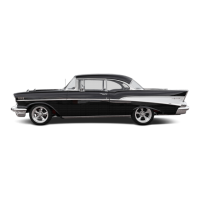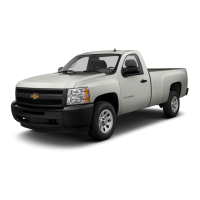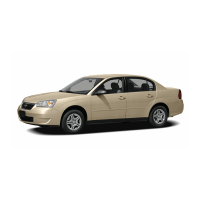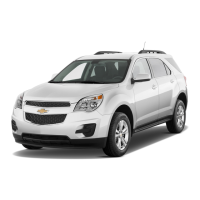
Do you have a question about the Chevrolet 1996 Chevrolet C/K Pickup and is the answer not in the manual?
| Brand | Chevrolet |
|---|---|
| Model | 1996 Chevrolet C/K Pickup |
| Category | Automobile |
| Language | English |
Guidance on using child or infant restraints for safety.
Ensuring child restraints are designed for vehicle use and following instructions.
Move shift lever to PARK (P) or NEUTRAL (N) to start; safety feature prevents starting elsewhere.
Gear selector must be in NEUTRAL (N) with clutch pedal down to start.
Explanation of the instrument cluster's gauges and indicators for vehicle operation.
Description of various warning lights and gauges that signal vehicle issues.
How the theft-deterrent feature works by using a secret code.
The core principle of driving defensively: be ready for anything and expect the unexpected.
The dangers of drinking and driving, and its effects on driving abilities.
Factors affecting BAC and legal limits for driving.
Strong warning about the severe risks of driving under the influence of alcohol.
Explanation of how the Anti-Lock Braking System (ABS) works and its self-check.
How the anti-lock system changes brake pressure faster than a driver for optimal control.
Importance of taking curves at reasonable speeds and understanding traction.
When steering can be more effective than braking in emergency situations.
Important considerations for loading the vehicle to maintain stability and safety off-road.
Factors to consider when approaching a hill, including steepness and obstacles.
Steps for safely driving uphill, including gear selection and maintaining speed.
Warning about the dangers of turning or driving across steep hills, and the need to go straight up.
Warning about the risks of driving at full speed to the crest of a hill.
Safety precautions when getting out of a vehicle stalled on an incline, especially regarding rollover.
Warning about the dangers of driving through rushing water, including loss of traction and rollover.
Warning about wet brakes affecting performance and how to dry them.
Notice about potential engine damage from driving through deep water.
Checklist for preparing for a long trip, including rest, clothing, and vehicle readiness.
Warning against coasting downhill in neutral or with the clutch depressed due to brake risks.
Techniques for driving in challenging conditions like mud, sand, snow, or ice.
Strong warning about the extreme danger of driving on frozen bodies of water.
Warning about deadly carbon monoxide from exhaust gases trapped by snow.
Warning about securing cargo in the truck bed to prevent injury during sudden stops or collisions.
Warning about exceeding weight ratings and its consequences on vehicle handling and life.
Warning about unsecured interior items causing injury during stops, turns, or crashes.
CAUTION about losing control when towing if equipment or driving is improper.
Notice that improper trailer towing can cause vehicle damage and void warranty.
Table showing maximum trailer weights for C/K-3500 Crew Cab models based on engine and axle ratio.
Importance of tongue weight (A) affecting vehicle's gross weight.
Ensuring tire inflation limits are met and not exceeding GVW limits.
Requirements for trailer brakes and how the vehicle's hydraulic system connects.
Experience needed for towing, familiarizing with handling and braking, and checking components.
Notice about avoiding sharp turns to prevent trailer contact with the vehicle.
Warning about the dangers of exiting a vehicle if the shift lever is not fully in PARK.
Increased service frequency for vehicles used for trailer towing and important checks.
Notice about potential damage and warranty issues from incorrect jump-starting procedures.
Precautions regarding vehicle proximity, parking brake, accessories, and battery terminals.
Safety precautions when towing, including passenger safety and securing the vehicle.
Warning about securing the towed vehicle properly to prevent accidents and injury.
Identification of cooling system components and what to do if steam is present.
Warning about steam and scalding liquids from an overheated engine and safety measures.
Notice that engine damage from driving without coolant is not covered by warranty.
Warning about the pressure in the cooling system and the danger of turning the radiator cap when hot.
Warning about the dangers of changing a tire, including vehicle slipping off the jack.
Steps for removing wheel nuts, positioning the jack, and loosening wheel nuts.
Warning about rust or dirt on wheels causing nuts to loosen, potentially leading to accidents.
Caution against using oil or grease on studs or nuts, as it can cause wheels to loosen or fall off.
Notice that spinning wheels can damage tires and the transmission.
Warning about the force on recovery hooks and pulling vehicles straight to avoid injury.
Importance of using genuine GM parts and GM-trained service people for vehicle maintenance.
Requirements for gasoline fuel, octane ratings, and potential issues like knocking.
Caution about performing service work without adequate knowledge, tools, or proper parts.
Procedure for checking the engine oil level accurately after the engine has cooled.
Guidelines on when to add oil and the correct type to use, with a caution about overfilling.
How to identify recommended engine oils using the Starburst symbol and proper viscosity grades.
Conditions that indicate when engine oil and filter should be changed based on driving habits.
Warning about operating the engine without an air cleaner, which can cause burns or engine fire.
When to check and change automatic transmission fluid and filter based on usage conditions.
Procedure for adding transmission fluid, recommending DEXRON-III and warning against overfilling.
When to check manual transmission fluid and how to do it safely.
Notice about potential transmission damage from incorrect fluid levels and fire risk from fluid spills.
When and how to check transfer case lubricant.
When to check and change front axle lubricant, and how to check it.
Information on the type of coolant, its capacity, and how to add it.
